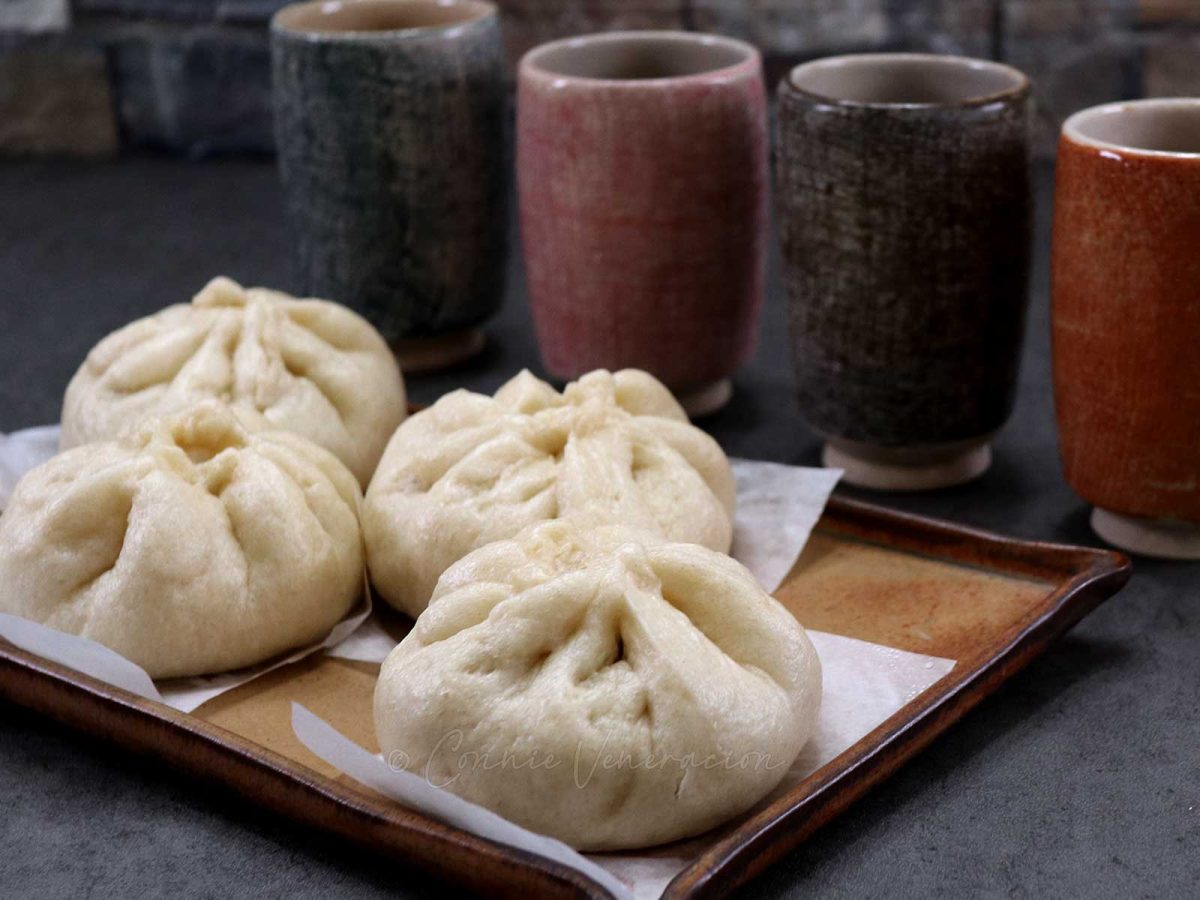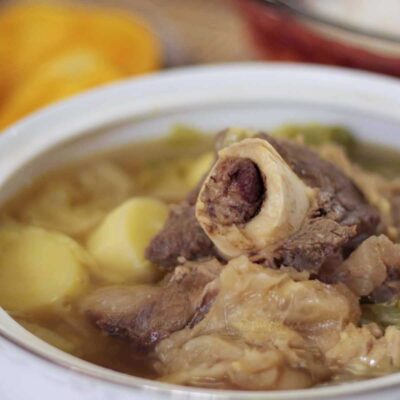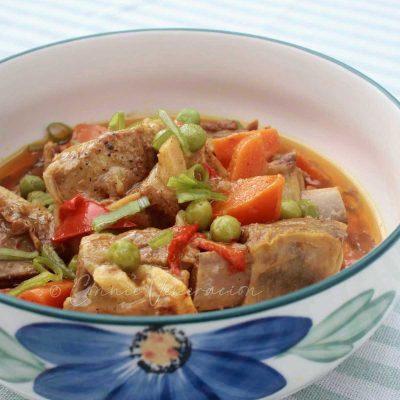Granted, the process is not for the faint-hearted. But when you succeed, the satisfaction of enjoying home cooked steamed pork buns is beyond words.
If you’ve made yeasted dough before, it shouldn’t be so difficult. The only difference really is that you steam these buns instead of baking them in the oven.

There are three steps in prepping baozi. You make the dough and, while it rests, you mix the filling. Then, you combine the two by cutting the dough into portions, flattening each and stuffing with the pork-vegetable filling.
Dough
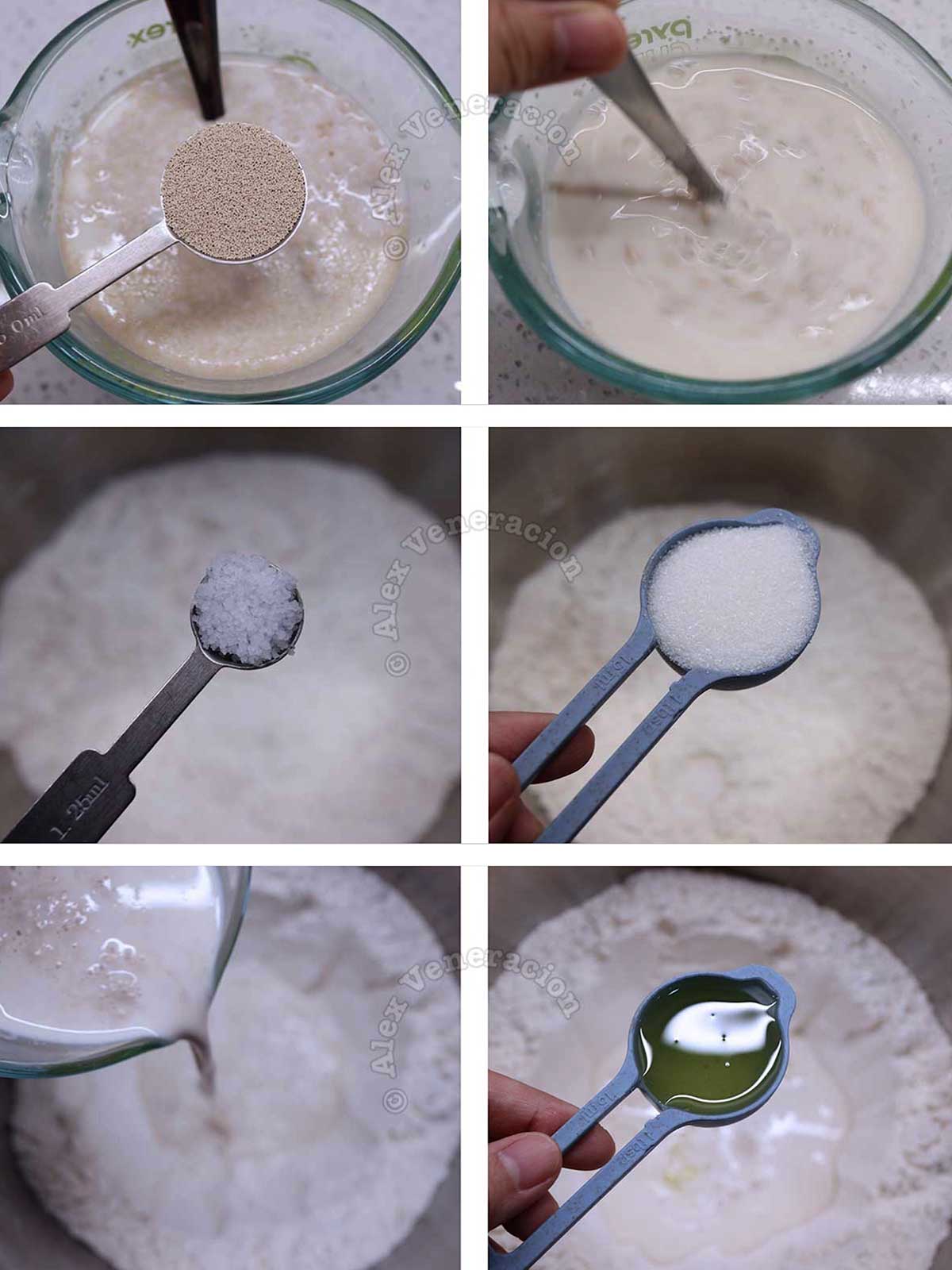
To make the dough, start by sprinkling yeast in milk. Set aside. In your mixing bowl, put in the flour, salt and sugar, and mix. Push the mixture to the sides to make a well at the center. Pour the yeast-milk mixture into that well followed by cooking oil.
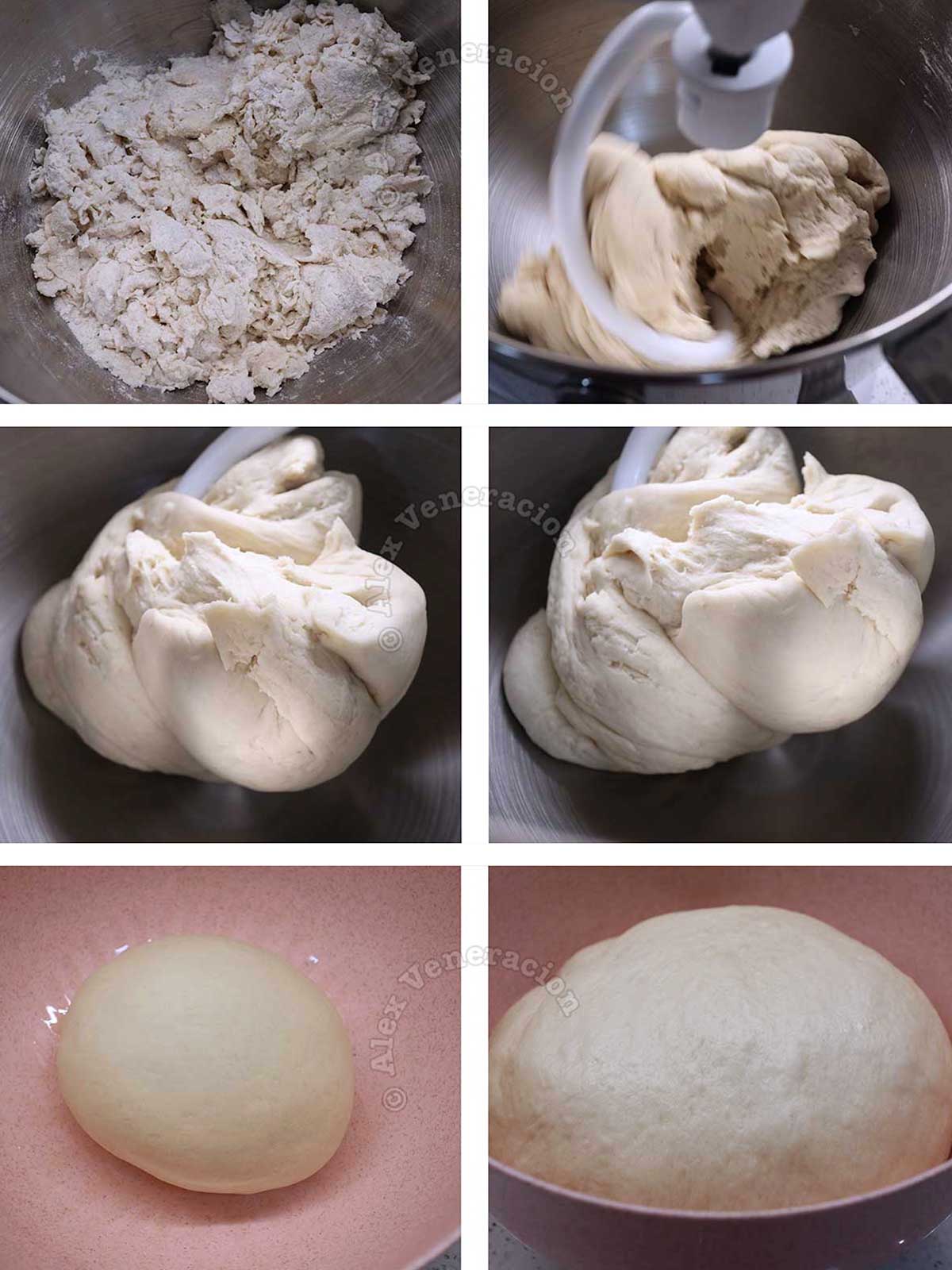
Mix until the dough no longer feels wet then knead. A stand mixer makes it easier and faster to knead the dough. It is not absolutely necessary, however. You may knead the dough by hand. The process will take longer but, if done right, the result will be just as good.
Once the dough has been sufficiently kneaded, you let it rest. In our house, it takes about an hour for the dough to double in volume. But that’s our house. We live in the tropics and it’s mostly warm and humid all year. The exact time that the dough needs to rest and rise depends on the temperature and humidity of your kitchen. It can be shorter or longer than one hour.
Pork and vegetable filling
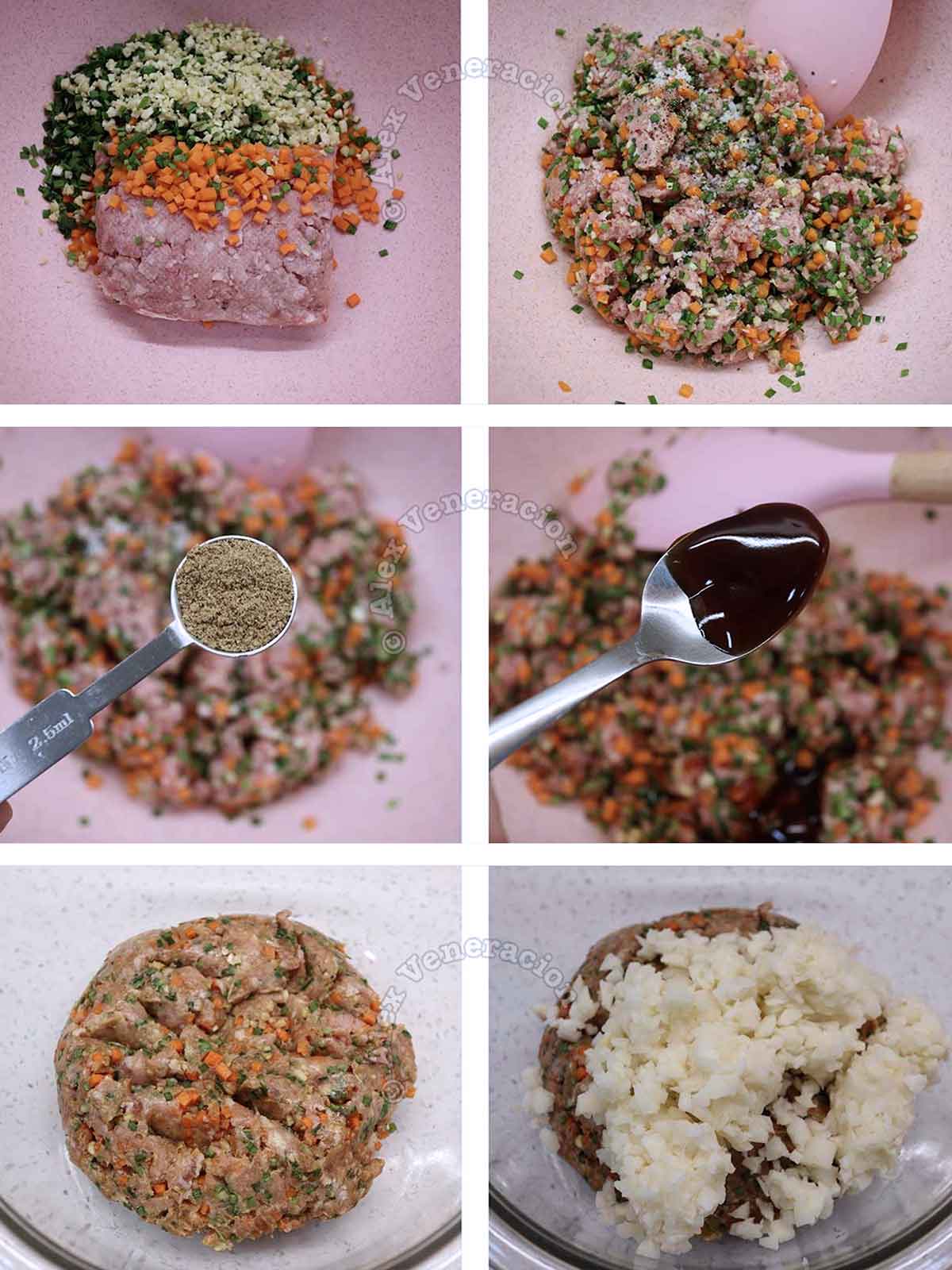
While your dough is resting, use the time to mix the filling. Use ground pork with at least 20% fat. Fatty pork binds (and tastes) better than lean pork. Add carrot, chives, ginger, garlic, salt, pepper, spices, soy sauce and oyster sauce.
To add a little crunch to the pork filling, chopped water chestnuts are traditionally added. If you can’t find water chestnuts, jicama may be substituted. If using jicama, allow it to dry out for a day or two before using. Peel and chop, sprinkle with salt, squeeze out to remove excess water then add to the pork mixture.
Assembling and steaming
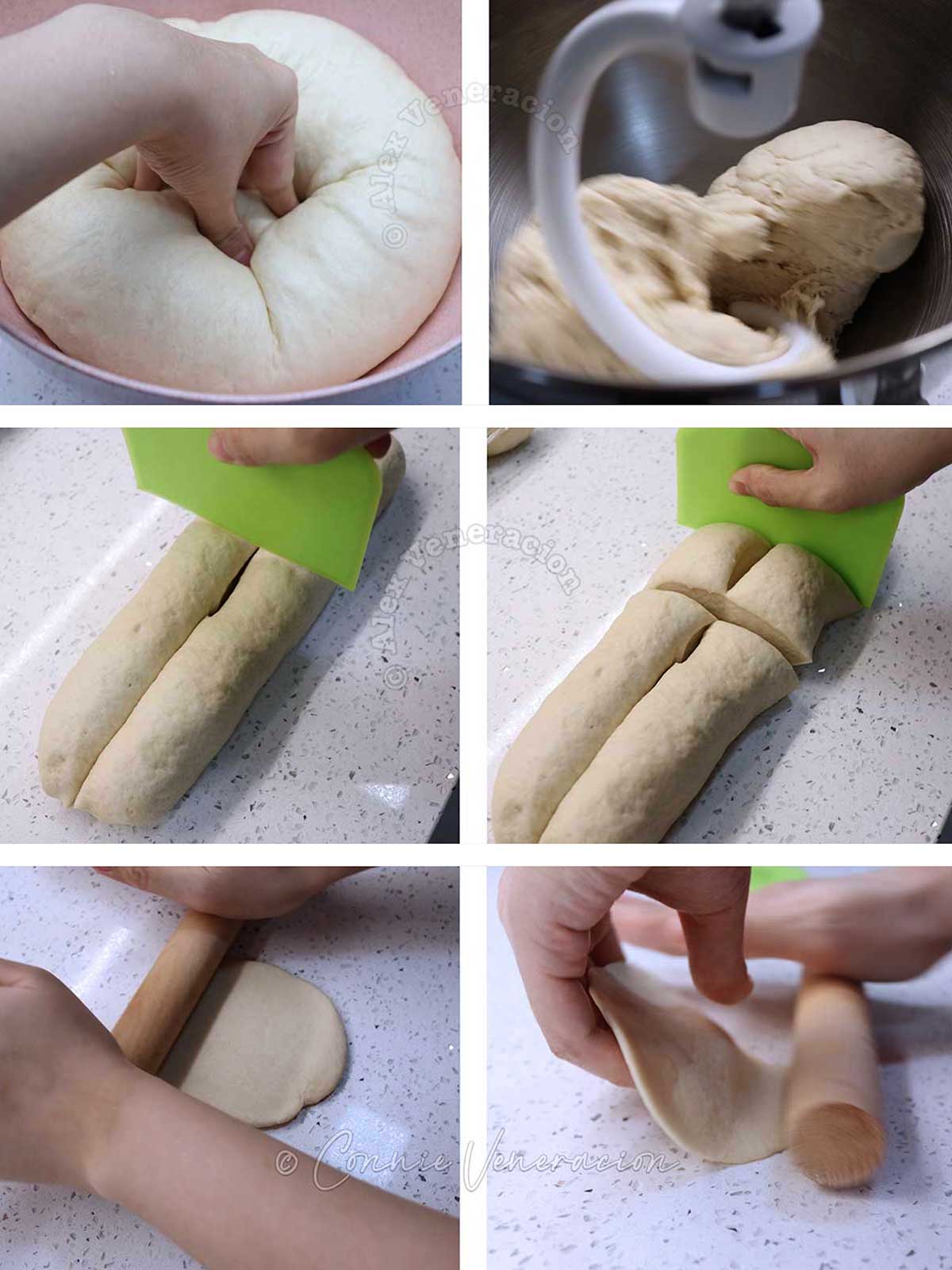
With the dough risen and the filling mixed, the assembly begins. You will need to punch down the dough and knead it again but only for a few minutes. Then, you dump it onto your floured work surface, divide it, cut each portion into a log and cut each log into small pieces. Each piece is then rolled flat to make space for the filling.
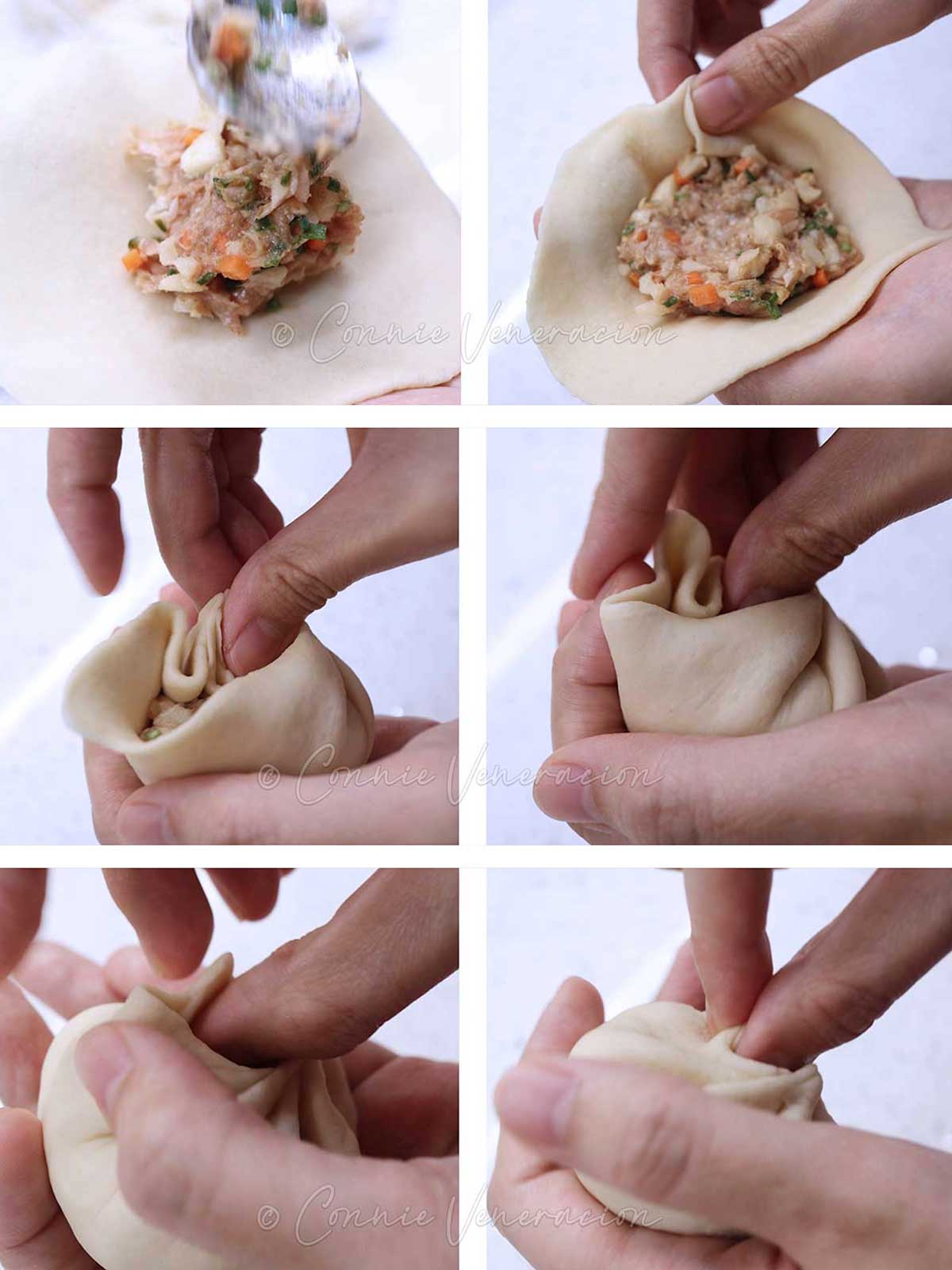
With a flattened dough on the palm of your hand, drop the filling at the center. Gather the edges of the dough and create pleats to seal in the filling. Admittedly, the pleating takes practice (my daughter, Alex, who made the baozi has gotten good at it over the months that she had been practicing). I described the process as best as I could in the recipe below.
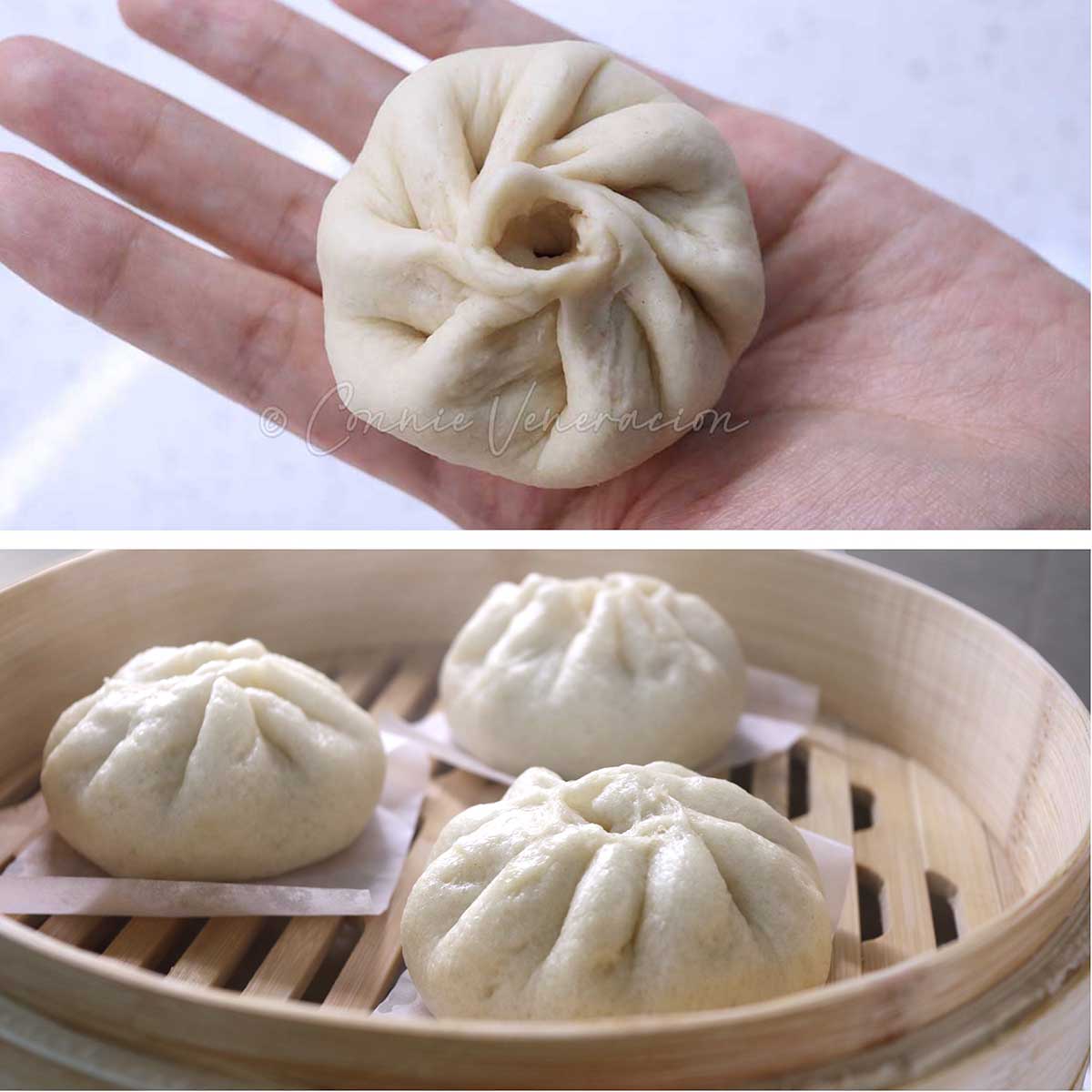
To make sure that the bottom of the buns don’t stick to the steamer basket, place each bun on square of non-stick paper before putting in the steamer. Leave the buns to rise a second time before steaming.
Chinese steamed pork buns (baozi)
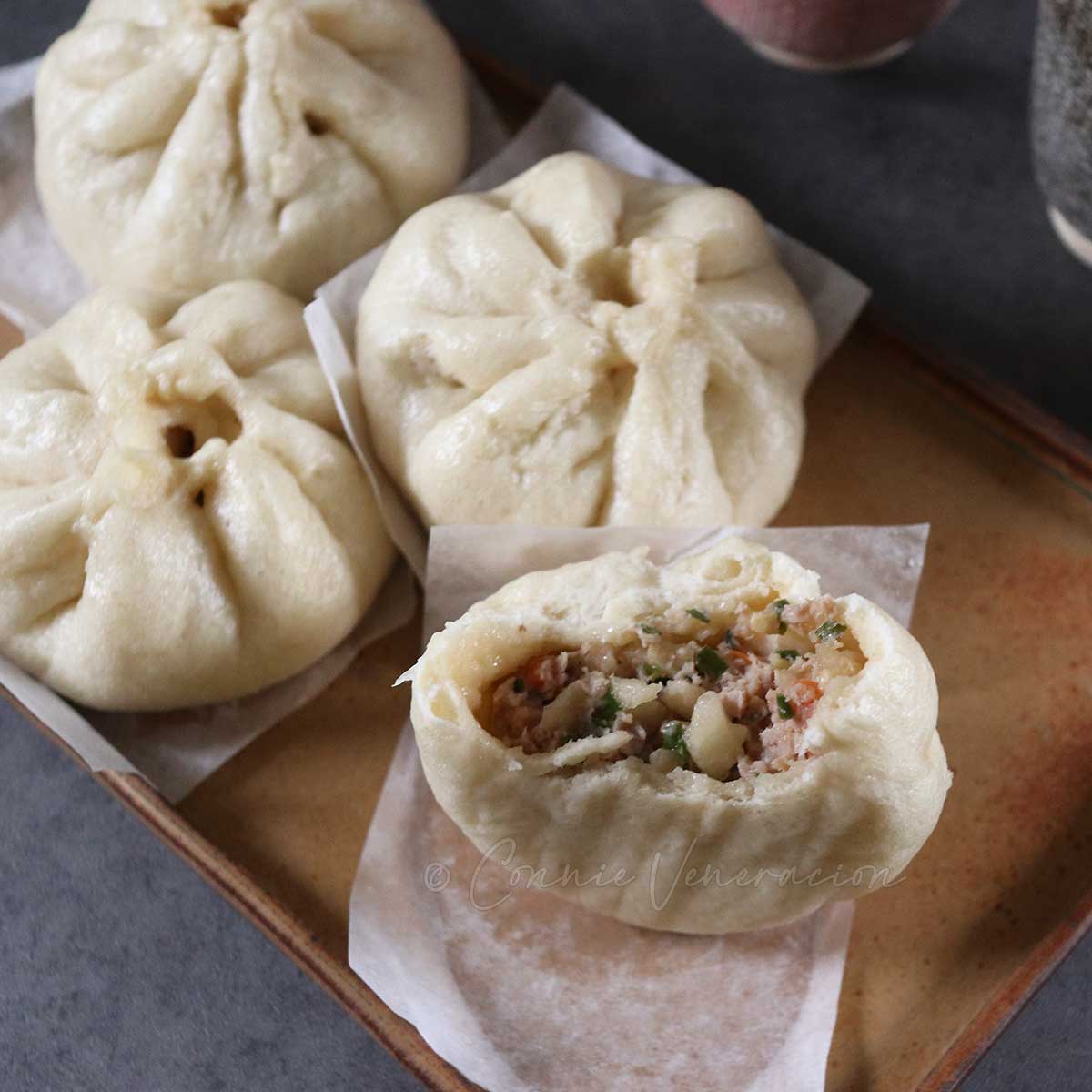
Equipment
- stand mixer
- Steamer (see notes)
- 16 greaseproof paper 2" x 2"
Ingredients
Dough
- 2 teaspoons instant yeast
- 1 ¼ cups full-fat milk
- 2 cups all-purpose flour plus more for dusting
- ⅛ teaspoon salt
- 2 tablespoons sugar
- 2 tablespoons vegetable oil divided
Pork Filling
- 250 grams ground pork
- ½ cup finely sliced chives
- ⅓ cup chopped carrot
- 1 tablespoon chopped garlic
- ½ teaspoon chopped ginger
- ½ teaspoon salt
- ¼ teaspoon pepper
- ½ teaspoon ground coriander
- ¼ teaspoon five-spice powder
- 1 tablespoon soy sauce
- 1 tablespoon oyster sauce
- ½ teaspoon sesame seed oil
- ½ cup chopped jicama or water chestnuts
Instructions
Make the dough
- Disperse the yeast in the milk and set aside.
- In the bowl of your stand mixer, measure the flour, add salt and sugar and whisk.
- Make a well in the center, pour in the milk-yeast mixture and one tablespoon oil.
- Mix everything together with a wooden spoon just until no longer wet.
- Attach the dough hook and knead the dough until smooth, about 10 minutes.
- Pinch a piece of dough to feel if it is soft and elastic. If not, knead for another minute.
- Coat the inside of a large bowl with the remaining tablespoon of oil.
- Dust your work surface with flour, dump in the dough and form into a ball.
- Place the dough in the prepared bowl, rolling it around to coat the entire surface with oil.
- Cover the bowl with cling film and leave the dough to rise until double in volume, about an hour.
Make the pork filling
- While the dough rises, place the ground pork, chives, carrot, garlic, ginger, salt and pepper in a bowl, and mix well.
- Add the ground coriander, five-spice powder, soy sauce, oyster sauce and sesame seed oil, and stir to combine.
- Add the chopped jicama and mix until evenly distributed.
Make the pork buns
- Punch down the dough, put back into the mixer and knead (at lowest speed) for about two minutes.
- Sprinkle flour on your work surface, dump in the dough and roll unto a log about a foot long and three inches wide.
- Cut the log into halves vertically then cut each half into eight equal pieces.
- Take a piece of dough and flatten into a disc about 1/8 inch thick using a rolling pin.
- Place the dough on the palm of one hand and drop a tablespoon of filling at the center.
- Using the thumb and forefinger of your free hand, fold and pinch the edges of the dough.
- With your other hand cupping the filled dough, turn it around slowly while your other hand continues folding and pinching the edges.
- Continue turning, folding and pinching until the filling is sealed.
- Lay the sealed dough on a piece of greaseproof paper.
- Repeat until all pieces of dough have been filled.
- Arrange the buns in steamer baskets, cover loosely with cling film and leave to rise for about ten minutes.
- Arrange the baskets over the steamer pot and cook the pork buns over briskly boiling water for 20 minutes.
- Serve your steamed pork buns immediately.
Notes
Steamer tips
We use three kinds of steamer at home similar to the ones below. Bamboo steamer baskets were used in this recipe.- The steamer that came with the rice cooker;
- Stainless steel pot and steamer basket set; and
- Bamboo steamer basket(s).
Suggested dipping sauces
- sweet soy sauce
- chili oil sauce
- Chinese black vinegar

